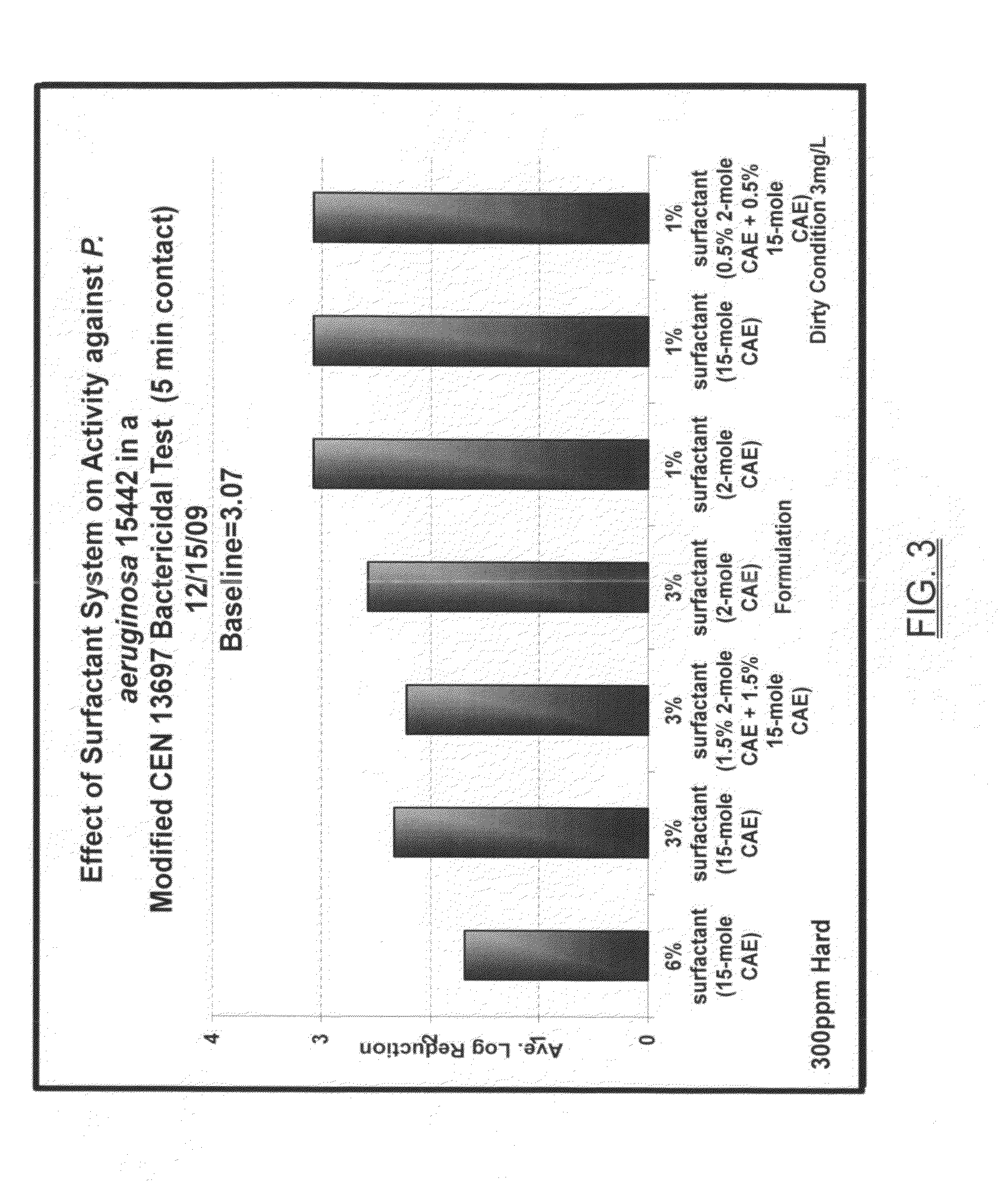Broad spectrum disinfectant
a broad spectrum disinfectant and broad spectrum technology, applied in the direction of disinfectants, biocide, fungicides, etc., can solve the problems of reducing the efficacy of killing organisms for these types of disinfectants, and reducing the efficacy of quat products, which are also traditionally poor fungicidal effects
- Summary
- Abstract
- Description
- Claims
- Application Information
AI Technical Summary
Benefits of technology
Problems solved by technology
Method used
Image
Examples
example 1
Effect of Chelant / Sequestrant on Activity Against A. brasiliensis 16404.
[0036]Examples A through F were tested against A. brasiliensis 16404. The results are set forth in FIG. 1. Data from FIG. 1 was obtained using ASTM International (2003) Standard Guide for Assessment of Antimocrobial Activity Using a Time-Kill Procedure, document #E2315-03. As apparent from FIG. 1, all of the various chelants were effective in producing average log reductions generally at least 10 times greater than the Control wherein no chelant / sequestrant was utilized.
TABLE 1Formulation #Chemical NameBrand NameABCDEFWaterWater75.5073.5073.5073.5073.5073.50Didecyl dimethylBardac 228012.5012.5012.5012.5012.5012.50ammoniumchloride (80%)SecondaryTergitol 15-S-74.004.004.004.004.004.00alchoholethoxylatePolyether polyolTergitol L-618.008.008.008.008.008.00Chelant / SequestrantNone2%2%2%2%2%MGDAEDDSIDSAGLDACarboxymethylInulin
example 2
[0037]The amount of DDAC was varied from none to 25 wt. % and the nonionic coupling agent was an ethylene oxide / propylene oxide block copolymer as set forth in Table 2. This composition was tested against A. brasiliensis 16404 and the results are set forth in FIG. 2. Data from FIG. 2 was obtained using a blend of two methods. Stainless steel disks described in ASTM International (2002), and standard quantitative disk carrier described in Test method for determining the bactericidal, virucidal, fungicidal, mycobactericidal and sporicidal activities of liquid chemical germicides, document #E2197-02, ASTM International, West Conshohocken, Pa. were utilized as a modification to BS EN 13697:2001 Quantitative non-porous surface test for the evaluation of bactericidal and / or fungicidal activity of chemical disinfectants used in food, industrial, domestic and institutional areas—test method and requirements without mechanical action (Phase 2, step 2). As apparent from FIG. 2, effective resu...
PUM
| Property | Measurement | Unit |
|---|---|---|
| Time | aaaaa | aaaaa |
| Time | aaaaa | aaaaa |
| Irradiation dose | aaaaa | aaaaa |
Abstract
Description
Claims
Application Information
 Login to View More
Login to View More - R&D
- Intellectual Property
- Life Sciences
- Materials
- Tech Scout
- Unparalleled Data Quality
- Higher Quality Content
- 60% Fewer Hallucinations
Browse by: Latest US Patents, China's latest patents, Technical Efficacy Thesaurus, Application Domain, Technology Topic, Popular Technical Reports.
© 2025 PatSnap. All rights reserved.Legal|Privacy policy|Modern Slavery Act Transparency Statement|Sitemap|About US| Contact US: help@patsnap.com



